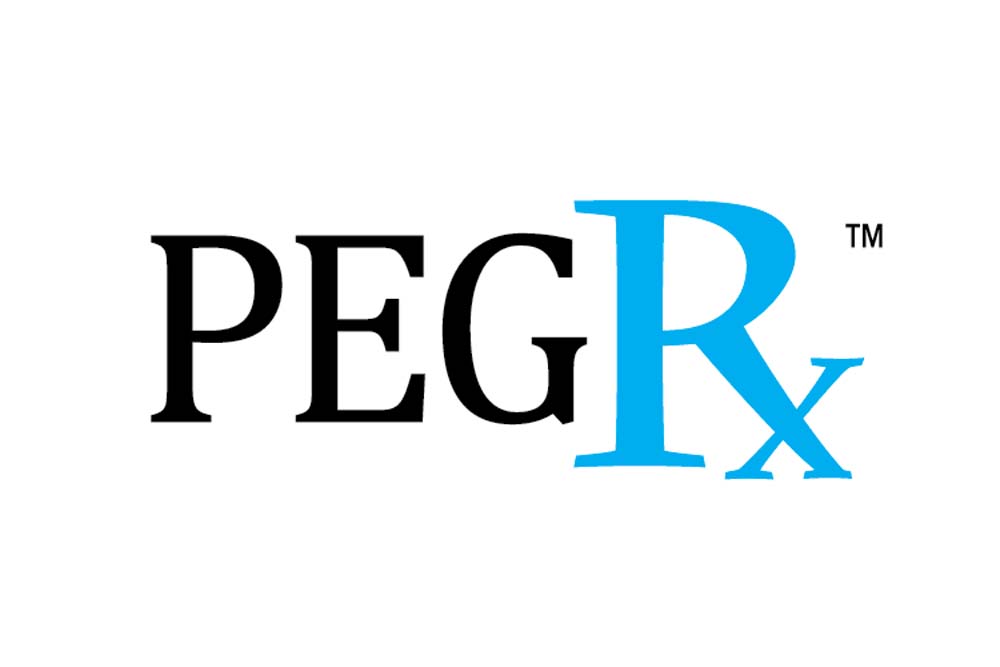Products > Crystallization Screens > PEGRx 1 • PEGRx 2 > PEGRx 1 • PEGRx 2 • PEGRx HT
PEGRx 1 • PEGRx 2 • PEGRx HT
APPLICATIONS
- Primary and secondary, polymer and pH based crystallization screen for biological macromolecules
FEATURES
- Developed at Hampton Research
- PEGRx 1 primary screen variables are polymer type (16 different polymers), polymer molecular weight, pH and low ionic strength.
- PEGRx 2 primary screen variables are polymer type (13 different polymers), polymer molecular weight, pH and secondary reagents which include additives, salts, volatile organics and polyols.
- PEGRx HT combines PEGRx 1 and PEGRx 2 into a single 96 Deep Well block
- pH range 3.5 – 9, using 10 different buffer systems
- Polymer molecular weight range 200 to 20,000
- Ligand friendly, complex friendly
DESCRIPTION
PEGRx is a primary and secondary, polymer and pH based crystallization screen developed at Hampton Research.
It is designed to evaluate polymer based crystallization reagents and pH in low (PEGRx 1) to medium ionic strength (PEGRx 2). It is also designed for use as a secondary or optimization screen to follow the Hampton Research Index screen when polymer based reagents produce hits and interesting solubility leads.
PEGRx 1 is a crystallization reagent kit designed to evaluate an array of polymers of varying molecular weight in a low ionic strength environment versus a wide range of pH. Polymer reagents include Polyethylene glycols, Polyethylene glycol monomethyl ethers, and Jeffamines®. The molecular weight range between 200 and 20,000 is evaluated in a low ionic strength formulation. Ten different buffers are used to span the range of pH between 3.5 and 9. The primary screen variables are polymer type, polymer molecular weight, pH and low ionic strength.
PEGRx 2 is a crystallization reagent kit designed to evaluate an array of polymers of varying molecular weight in a medium ionic strength environment in the presence of additives, salts, volatile organics and polyols versus a wide range of pH. Polymer reagents include Polyethylene glycols and Polyethylene glycol monomethyl ethers. The polymer molecular weight range between 200 and 20,000 is evaluated in a medium ionic strength formulation. Ten different buffers are used to span the range of pH between 3.5 and 9. The primary screen variables are polymer type, polymer molecular weight, pH and secondary reagents which include additives, salts, volatile organics and polyols.
PEGRx 1 contains 48 unique reagents, 10 ml each.
PEGRx 2 contains 48 unique reagents, 10 ml each.
PEGRx HT contains the 96 PEGRx 1 and PEGRx 2 reagent in a single Deep Well block format.
Ready-to-use reagents are sterile filtered and formulated with ultra-pure Type 1 water, using the highest purity salts, polymers, organics and buffers. Individual reagents are available through the Hampton Research Custom Shop.
SUPPORT MATERIAL(S)
RELATED ITEM(S)
REFERENCES
1. Crystallization and preliminary X-ray crystallographic studies of DesR, a thermosensing response regulator in a two-component signalling system from Streptococcus pneumoniae. Ae Kyung Park, Seung Min Bong, Jin Ho Moon and Young Min Chi. Acta Cryst. (2009). F65.
2. Crystal structure of SARS-CoV-2 main protease provides a basis for design of improved α-ketoamide inhibitors. Zhang L, Lin D, Sun X, Curth U, Drosten C, Sauerhering L, Becker S, Rox K, Hilgenfeld R. Science. 2020 Apr 24;368(6489):409-412. doi: 10.1126/science.abb3405. Epub 2020 Mar 20.
3. Structural insight into the electron transfer pathway of a self-sufficient P450 monooxygenase. Zhang, L., Xie, Z., Liu, Z. et al. Nat Commun 11, 2676 (2020). https://doi.org/10.1038/s41467-020-16500-5.

